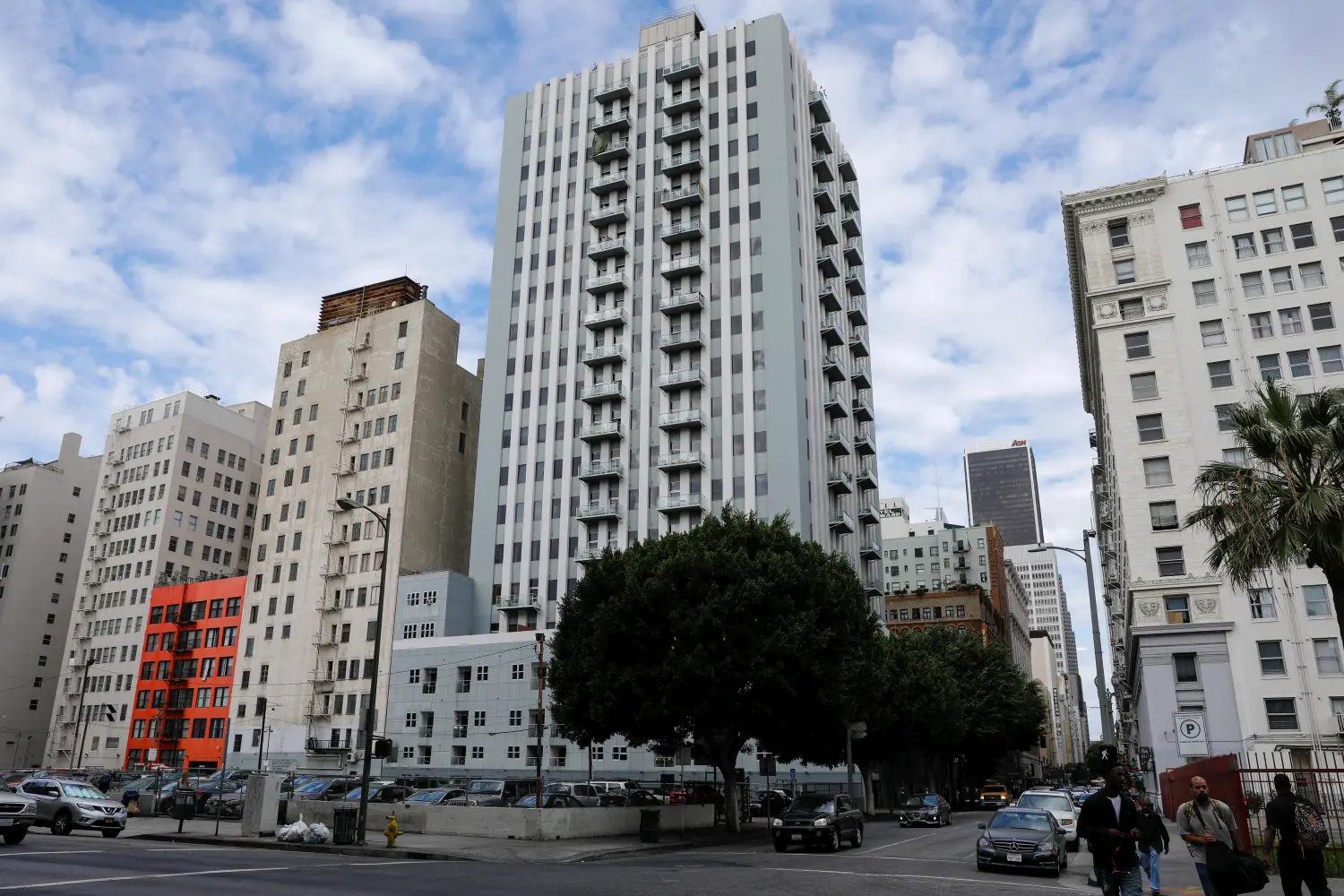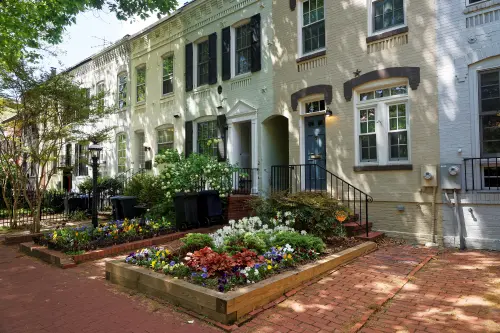Steadily rising housing rents in many of the US’s large, productive cities have reignited the discussion whether to expand or enact rent control provisions. Under pressure to fight rising rents, state lawmakers in Illinois, Oregon, and California are considering repealing laws that limit cities’ abilities to pass or expand rent control. While rules and regulations of rent control vary from place to place, most rent control consists of caps on price increases within the duration of a tenancy, and sometimes beyond the duration of a tenancy, as well as restrictions on eviction.
New research examining how rent control affects tenants and housing markets offers insight into how rent control affects markets. While rent control appears to help current tenants in the short run, in the long run it decreases affordability, fuels gentrification, and creates negative spillovers on the surrounding neighborhood.
A substantial body of economic research has used theoretical arguments to highlight the potential negative efficiency consequences to keeping rents below market rates, going back to Friedman and Stigler (1946). They argued that a cap on rents would lead landlords to sell their rental properties to owner occupants so that landlords could still earn the market price for their real estate. Rent control can also lead to “mis-match” between tenants and rental units. Once a tenant has secured a rent-controlled apartment, he may not choose to move in the future and give up his rent control, even if his housing needs change (Suen 1980, Glaeser and Luttmer 2003, Sims 2011, Bulow and Klemperer 2012). This mis-allocation can lead to empty-nest households living in family-sized apartments and young families crammed into small studios, clearly an inefficient allocation. Similarly, if rental rates are below market rates, renters may choose to consume excessive quantities of housing (Olsen 1972, Gyourko and Linneman 1989). Rent control can also lead to decay of the rental housing stock; landlords may not invest in maintenance because they can’t recoup these investment by raising rents. (Downs 1988, Sims 2007).
Of course, rent control also offered potential benefits for tenants. For example, rent control provides insurance against rent increases, potentially limiting displacement. Affordable housing advocates argue that these insurance benefits are valuable to tenants. For instance, if long-term tenants have developed neighborhood-specific capital, such as a network of friends and family, proximity to a job, or children enrolled in local schools, then tenants face large risks from rent appreciation. In contrast, individuals who have little connection to any specific area can easily insure themselves against local rental price appreciation by moving to a cheaper location. Those invested in the local community are not able to use this type of “self-insurance” as easily, since they must give up some or all of their neighborhood specific capital. Rent control can provide these tenants with this type of insurance.
Until recently, there was little data or natural experiments with which to assess the importance of these competing arguments, and to assess how rent controls affects tenants, landlords, or the broader housing market. But newly-available housing-market data spanning periods of dramatic change in rent control laws in Cambridge, MA and in San Francisco, CA have allowed economists to examine these questions empirically. While these studies do find support for the idea that existing tenants benefit from the insurance provided by rent control, they also find the overall cost of providing that insurance is very large.
From December 1970 through 1994, all rental units in Cambridge built prior to 1969 were regulated by a rent control ordinance that placed strict caps on rent increases and tightly restricted the removal of units from the rental stock. The legislative intent of the rent control ordinance was to provide affordable rental housing, and at the eve of rent control’s elimination in 1994, controlled units typically rented at 40-plus percent below the price of nearby non-controlled properties. In November 1994, the Massachusetts electorate passed a referendum to eliminate rent control by a narrow 51–49 percent margin, with nearly 60 percent of Cambridge residents voting to retain the rent control ordinance. This law change directly impacted properties previously subject to rent control, enabling landlords to begin to charge market rents.
Autor, Palmer, and Pathak (2014) (APP), studies the impact of this unexpected change and find that newly decontrolled properties’ market values increased by 45 percent. In addition to these direct effects of rent decontrol, APP find removing rent control has substantial indirect effects on neighboring properties, boosting their values too. Post-decontrol price appreciation was significantly greater at properties that had a larger fraction of formerly controlled neighbors: residential properties at the 75th percentile of rent control exposure gained approximately 13 percent more in property value following decontrol than did properties at the 25th percentile of exposure. This differential appreciation of properties in rent control–intensive locations was equally pronounced among decontrolled and never-controlled units, suggesting that the effect of rent control had been to reduce the whole neighborhood’s desirability.
The economic magnitude of the effect of rent control removal on the value of Cambridge’s housing stock is large, boosting property values by $2.0 billion between 1994 and 2004. Of this total effect, only $300 million is accounted for by the direct effect of decontrol on formerly controlled units, while $1.7 billion is due to the indirect effect. These estimates imply that more than half of the capitalized cost of rent control was borne by owners of never-controlled properties. Rent controlled properties create substantial negative externalities on the nearby housing market, lowering the amenity value of these neighborhoods and making them less desirable places to live. In short, the policy imposed $2.0 billion in costs to local property owners, but only $300 million of that cost was transferred to renters in rent-controlled apartments.
Diamond, McQuade, and Qian (2018) (DMQ) examine the consequences of an expansion of rent control on renters, landlords, and the housing market that resulted from a unique 1994 local San Francisco ballot initiative. In 1979, San Francisco imposed rent control on all standing buildings with five or more apartments. Rent control in San Francisco consists of regulated rent increases, linked to the CPI, within a tenancy, but no price regulation between tenants. New construction was exempt from rent control, since legislators did not want to discourage new development. Smaller multi-family buildings were exempt from this 1979 law change since they were viewed as more “mom and pop” ventures, and did not have market power over rents.
This exemption was lifted by a 1994 San Francisco ballot initiative. Proponents of the initiative argued that small multi-family housing was now primarily owned by large businesses and should face the same rent control of large multi-family housing. Since the initial 1979 rent control law only impacted properties built from 1979 and earlier, the removal of the small multi-family exemption also only affected properties built 1979 and earlier. This led to a differential expansion in rent control in 1994 based on whether the small multi-family housing was built prior to or post 1980—a policy experiment where otherwise similar housing was treated differently by the law.
To examine rent control’s effects on tenant migration and neighborhood choices, DMQ examine panel data that provides address-level migration decisions and housing characteristics for the majority of adults living in San Francisco in the early 1990s. This allows them to define a treatment group of renters who lived in small multi-family apartment buildings built prior to 1980 and a control group of renters living in small multi-family housing built between 1980 and 1990. Their data allows them to follow each of these groups over time up until the present, regardless of where they migrate.
Between five and ten years after the law change, the beneficiaries of rent control are 19 percent less likely to have moved to a new address, relative to the control group’s migration rate. Further, impact on the likelihood of remaining in San Francisco as whole was the same, indicating a large share of the renters that rent control caused to remain at their 1994 address would have left San Francisco had they not been covered by rent control.
These effects are significantly stronger among older households and among households that have already spent a number of years at their address prior to treatment. This is consistent with the fact that both of these populations are likely to be less mobile. Renters who don’t need to move very often are more likely to find it worthwhile to remain in their rent controlled apartment for a long time, enabling them to accrue larger rent savings. Finally, DMQ find these effects are especially large for racial minorities, likely indicating that minorities faced greater displacement pressures in San Francisco than whites.
While expansion of rent control did prevent some displacement among tenants living in San Francisco in 1994, the landlords of these properties responded to mitigate their rental losses in a number of ways. In practice, landlords have a few possible ways of removing tenants. First, landlords could move into the property themselves, known as move-in eviction. Second, the Ellis Act allows landlords to evict tenants if they intend to remove the property from the rental market, for instance, in order to convert the units to condos. Finally, landlords are legally allowed to offer their tenants monetary compensation for leaving. In practice, these transfer payments from landlords are common and can be quite large.
DMQ find that rent-controlled buildings were 8 percentage points more likely to convert to a condo than buildings in the control group. Consistent with these findings, they find that rent control led to a 15 percentage point decline in the number of renters living in treated buildings and a 25 percentage point reduction in the number of renters living in rent-controlled units, relative to 1994 levels. This large reduction in rental housing supply was driven by converting existing structures to owner-occupied condominium housing and by replacing existing structures with new construction.
This 15 percentage point reduction in the rental supply of small multi-family housing likely led to rent increases in the long-run, consistent with standard economic theory. In this sense, rent control operated as a transfer between the future renters of San Francisco (who would pay these higher rents due to lower supply) to the renters living in San Francisco in 1994 (who benefited directly from lower rents). Furthermore, since many of the existing rental properties were converted to higher-end, owner-occupied condominium housing and new construction rentals, the passage of rent control ultimately led to a housing stock that caters to higher income individuals. DMQ find that this high-end housing, developed in response to rent control, attracted residents with at least 18 percent higher income. Taking all of these points together, it appears rent control has actually contributed to the gentrification of San Francisco, the exact opposite of the policy’s intended goal. Indeed, by simultaneously bringing in higher income residents and preventing displacement of minorities, rent control has contributed to widening income inequality of the city.
It may seem surprising that the expansion of rent control in San Francisco led to an upgraded housing stock, catering to high-income tastes, while the removal of rent control in Cambridge also lead to upgrading and value appreciation. To reconcile these effects, it is useful to think about which types of landlords would respond to a rent control expansion versus a rent control removal. In the case of rent control expansion, some landlords will choose to recoup some of their losses by converting to condo or redeveloping their building to exempt it from rent control. However, other landlords may choose to accept the rent control regulation, and no longer perform maintenance on the building and allow it to decay. In the rent control expansion case, one would see an increase in condo conversions and upgrades, driven by the landlords that chose to respond in this way. However, when rent control is removed, the landlords who own the rent controlled buildings are the ones who didn’t choose to convert to condo or redevelop in response to the initial passage of rent control. Indeed, one would expect this subset of landlords to choose to upgrade and invest in their properties once the rent control regulation is removed.
Rent control appears to help affordability in the short run for current tenants, but in the long-run decreases affordability, fuels gentrification, and creates negative externalities on the surrounding neighborhood. These results highlight that forcing landlords to provide insurance to tenants against rent increases can ultimately be counterproductive. If society desires to provide social insurance against rent increases, it may be less distortionary to offer this subsidy in the form of a government subsidy or tax credit. This would remove landlords’ incentives to decrease the housing supply and could provide households with the insurance they desire. A point of future research would be to design an optimal social insurance program to insure renters against large rent increases.
The authors did not receive any financial support from any firm or person for this article or from any firm or person with a financial or political interest in this article. They are currently not an officer, director, or board member of any organization with an interest in this article.






